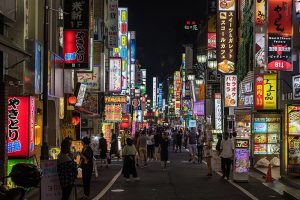The suspension of Japan’s “Go To Travel” campaign comes as a bolt from the blue for the country’s beleaguered tourism sector, which has already been reeling from the loss of revenue due to the outbreak of the coronavirus pandemic.
Prime Minister Suga Yoshihide has been putting strong faith in the “Go To Travel” campaign, which aimed at promoting domestic tourism, since international tourist arrivals have fallen sharply and there does not seem to be any light on the horizon, immediately. The campaign was launched in July and covered 35 percent of accommodations charges in addition to providing 15 percent discounts for restaurant dining and souvenirs; which worked out to be almost 50 percent of the total expenses incurred on a particular trip.
Suga had earlier announced a new stimulus that in fact allowed for an extension of the “Go To Travel” campaign. It had initially been scheduled to end in early January 2021.
Why Suspend the Campaign?
First, the government has been tackling a burst in coronavirus infections recently and this represents a big worry for the Suga administration, especially as next year, the government is preparing to host the rescheduled Tokyo Olympics. Some of the the new cases are suspected to have been linked to the “Go To Travel” campaign, prompting authorities to remove some cities from the list covered by the campaign.
Second, the shortage of hospital beds is another big worry for the Japanese authorities. This problem is more acute in the case of Japan as it has a huge elderly population. While medical facilities in Japan are much more developed than in many other countries, the government cannot afford a spike in case, both in Tokyo and in the prefectures. Even the capital city of Tokyo has recorded a new high in terms of cases, and has raised its alert level.
The Future of the Campaign
Arguably, the need for the “Go To Travel” campaign remains. The program would need to continue for some time until international travel picks up again. The vaccination campaigns in different countries will be eagerly watched in Tokyo along with the rest of the world.
This also means that Japan’s economy needs a shakeup in days ahead. Much of the Japanese economy relies on cash transactions and digital payments are yet to pick up, as has happened in countries like China. Also, in an earlier stimulus, the government allocated 220 billion yen for Japanese firms willing to shift their supply lines from China back to Japan and 23.5 billion yen for those Japanese companies wishing to shift production to third countries.
Recently in the third quarter, the Japanese economy showed some signs of a rebound, which may have prompted the government to err on the side of caution. At this stage, the government has done well to suspend the campaign. As they say, “act in haste, repent at leisure.”
Dr Rupakjyoti Borah is a senior research fellow at the Japan Forum for Strategic Studies, Tokyo. His forthcoming book is “The Strategic Relations between India, the United States and Japan in the Indo-Pacific: When Three is Not a Crowd.” He has also authored two other books. He has also been a visiting fellow at the University of Cambridge, the Japan Institute of International Affairs (JIIA), Japan and the Australian National University. The views expressed here are personal. Twitter @rupakj

































